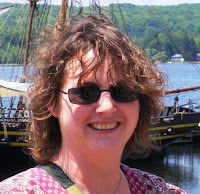
By Adrienne Horne, M.A.
Regional Project Manager
Western Corridor 1812 Bicentennial Alliance
What's In A Name? ... Part 4 ...
Continuing from last week ... Naturally then, the Talbot Line outlines Colonel Thomas Talbot’s land grant that he received from the British government for his service in the army in 1803. The Colonel actually built the road himself during the time of the war so that it was completed in 1820 and was considered one of the best roads in Upper Canada at the time.
Driving into Amherstburg is like a history lesson, travelling along Simcoe St, you first come across Victoria St, then Brock St, George St and of course then King St. As Simcoe was into politics you will then find Seymour St., named after Benjamin Seymour, a politician born in Upper Canada in 1806.
If you know your history then you will be able to see these names in a different light. They are no longer just a meaningless name. So next time you venture out, look at the names of streets and business and see if you can recognize any from the War of 1812.
You now know that Allan MacNab was the “Boy Hero of the War of 1812”and went onto a successful political career, and that is why he is celebrated in Hamilton. Understanding that Simcoe granted land to all these people who then went out and settled towns that they then name after themselves puts these communities within a larger context. Ingersoll is not just a name taken from Scotland, it was a man who came to Upper Canada to make a better life for his family and neighbours. It makes sense now that the York Road in Hamilton is the road that leads to York (now Toronto and the road is now the QEW).
You don’t need GPS; you just need to know your history!




